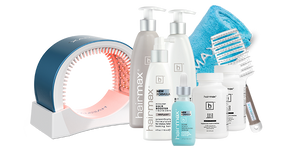Developments in science and medicine frequently produce news headlines which create high public awareness of these events. It has been reported that more than one million scientific research papers are published in scientific journals every year. In order to decide which research results should be published in medical or scientific journals to help assure that only the best scientific information is disseminated, there is a system in place called peer review or ‘refereeing’ that is used. Peer review involves subjecting the author’s article on the research to the scrutiny of others who are experts in the same field to ‘referee’ the contents of the article. Qualified scientific experts (peers) chosen are required to perform impartial review before the results are made public. While this process is extensively used and universally recognized by scientists as a means to validate research claims, the public knows little about the existence of the peer-review process or what it involves. When you read about results of clinical studies in the various media, be sure that the information has been published in a peer review or ‘refereed’ journal. That way you will know that the research was conducted in a scientific manner and that the results were validated by independent review.

Lexington International has just published the results of the clinical study on the HairMax LaserComb which was a key component of the 510(k) clearance submission and subsequent clearance to market the HairMax LaserComb from the FDA. This article was the subject of a scientific peer review process and the results will be published in a peer review or ‘refereed’ journal, Clinical Drug Investigation in May 2009. The article is entitled, HairMax LaserComb Laser Phototherapy Device in the Treatment of Male Androgenetic Alopecia. Below is an abstract of the article:
HairMax LaserComb(R) Laser Phototherapy Device in the Treatment of Male Androgenetic Alopecia: A Randomized, Double-Blind, Sham Device-Controlled, Multicentre Trial.
Leavitt M, Charles G, Heyman E, Michaels D.
Private Dermatology Practice, Maitland, Florida, USA.
The use of low levels of visible or near infrared light for reducing pain, inflammation and oedema, promoting healing of wounds, deeper tissue and nerves, and preventing tissue damage has been known for almost 40 years since the invention of lasers. The HairMax LaserComb(R) is a hand-held Class 3R lower level laser therapy device that contains a single laser module that emulates 9 beams at a wavelength of 655 nm (+/-5%). The device uses a technique of parting the user’s hair by combs that are attached to the device. This improves delivery of distributed laser light to the scalp. The combs are designed so that each of the teeth on the combs aligns with a laser beam. By aligning the teeth with the laser beams, the hair can be parted and the laser energy delivered to the scalp of the user without obstruction by the individual hairs on the scalp. The primary aim of the study was to assess the safety and effectiveness of the HairMax LaserComb(R) laser phototherapy device in the promotion of hair growth and in the cessation of hair loss in males diagnosed with androgenetic alopecia (AGA). This double-blind, sham device-controlled, multicentre, 26-week trial randomized male patients with Norwood-Hamilton classes IIa-V AGA to treatment with the HairMax LaserComb(R) or the sham device (2 : 1). The sham device used in the study was identical to the active device except that the laser light was replaced by a non-active incandescent light source. Of the 110 patients who completed the study, subjects in the HairMax LaserComb(R) treatment group exhibited a significantly greater increase in mean terminal hair density than subjects in the sham device group (p
Clin Drug Investig. 2009;29(5):283-92. doi: 10.2165/00044011-200929050-00001
PMID: 19366270 [PubMed – in process










